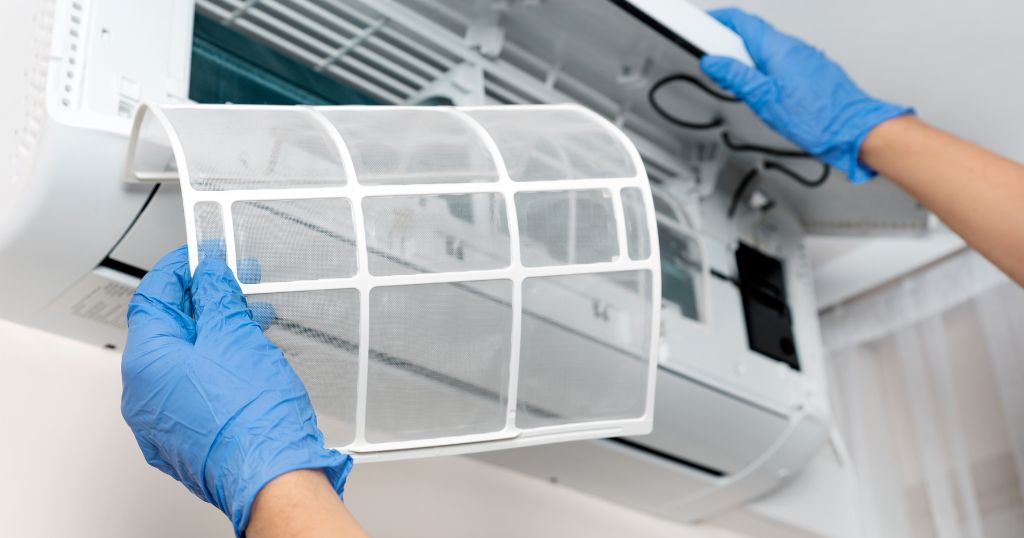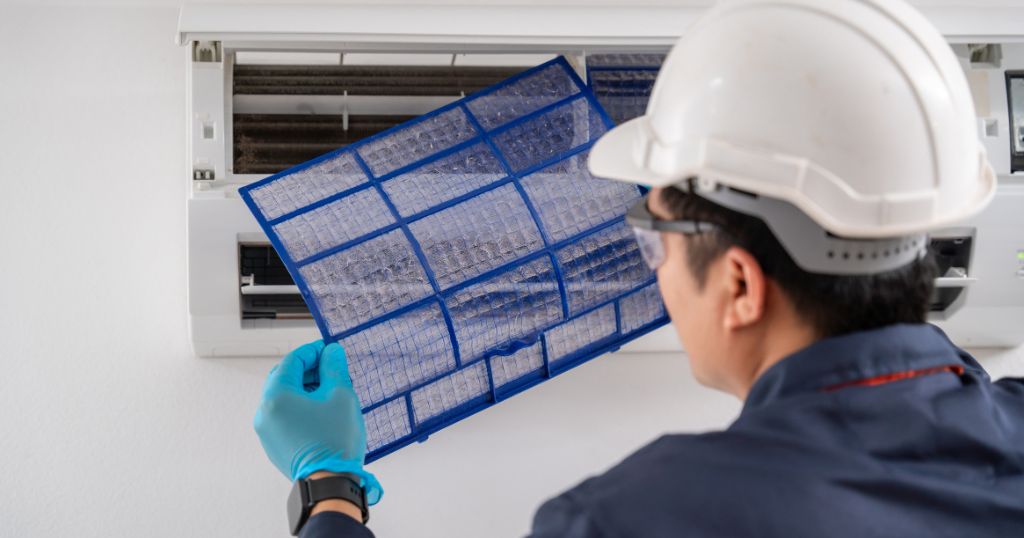What Are The Most Common Air Filter Sizes?
What Are The Most Common Air Filter Sizes?
Selecting the proper air filter size is a frequent question, and it’s completely natural to wonder about it. Understanding the importance of air filter sizes is crucial for maintaining the quality of the air in your home, ensuring that your heating, ventilation, and air conditioning (HVAC) system functions efficiently, and cutting down on energy costs.
The exact size, however, can be difficult to determine. It’s reasonable to ask how to appropriately measure air filter sizes and choose the finest option for your household. This comprehensive information will come in handy in that situation. In this blog, we will go over everything you need to know about air filter sizes, from the fundamentals to practical recommendations for choosing the right filter.
With our guidance, you can easily understand the world of air filters. Whether you are a new homeowner or a seasoned homeowner, you will find all the information you need to understand the importance of air filter sizes. So, let’s start on this journey together and simplify the process of choosing the right air filter size for your home.
Some Most Common Furnace And AC Filter Sizes

Understanding the correct size for your furnace and AC filters is important for maintaining optimal airflow throughout your home. Typically, air filters are specified by three measurements: length, width, and thickness. Here, we list some of the most common sizes:
Common Air Filter Sizes
These sizes are easily available in home supply stores or online. They match the regular dimensions of return air vents (part of the HVAC system) found in most residential buildings. These vents are essential for managing the flow of air into and out of your HVAC system. Therefore, selecting the appropriate filter size is essential for ensuring efficient operation and maintaining indoor air quality.
How Can You Determine The Correct Size Of Air Filter You Need?

Maintaining clean air and a well-functioning HVAC system in your home are important factors for a healthy and comfortable living environment. One important step to achieving this is by ensuring you have the right size air filter installed. Although the filter doesn’t have to fit super tight, it should sit securely in the filter compartment with some space around the edges.
Additionally, it should be easy to slide in and out. To determine the correct size, check the dimensions printed on your current filter or measure the slot in your HVAC system. The dimensions are typically listed as length, width, and height (L x W x H). It’s essential to get an exact match, as even small differences can affect its efficiency.
A filter that’s too small won’t be able to capture as many particles, while a filter that’s too big won’t fit correctly and may allow unfiltered air to pass through. By selecting the right size filter, you can ensure that your HVAC system works optimally and your home’s air remains clean and healthy.
Measuring Your Air Filter: What Steps Should You Take?

When it’s time to figure out the size of air filter, you have got three simple options. These methods make it easy to get the right dimensions for your furnace filter. Let’s go through these steps to help you find the perfect fit for your HVAC system.
1. Look At The Label On The Filter Frame
When it comes to figuring out your air filter size, one easy way is to check the label on the filter frame. Just take out the current filter and look closely at the frame. You will often see the size printed right there. But remember, the size you see in bold might not be the exact size of the filter. If you can’t find the actual dimensions listed somewhere on the frame, it’s a good idea to measure the filter yourself to be sure. This helps you get the right replacement filter for your HVAC system without any guesswork.
2. Measure The Filter Directly
If you are not sure about your air filter’s size, you can measure it yourself using a ruler or something similar. This is especially helpful if your filter doesn’t have a label showing its size or if you are not sure about its dimensions. Here’s what you need to do: First, make sure to turn off your AC for safety. Then, measure the length, width, and thickness of your filter using the ruler. Remember, before buying a new filter of the same size, consider whether it’s the right fit for your furnace. If you are unsure, it’s a good idea to measure your air intake to ensure you get the correct size for your HVAC system.
3. Measure The Size Of Your Air Intake
To make sure you buy the right-sized filter for your HVAC system, it’s important to measure the inside dimensions of your air filter intake. Here’s what you need to do: First, turn off your AC for safety. Then, with a measuring tape or another tool, measure the length, width, and depth of the inside edge of your air filter’s slot or frame. When figuring out the size of your air filter, round down to the nearest whole number. Your filter should be a bit smaller than the slot or frame, usually by about 0.25 to 0.5 inches. This ensures it fits properly and keeps your HVAC system working well.
Actual vs Nominal Filter Size

When it comes to buying an air filter, understanding the difference between nominal and actual sizes is necessary. Generally, air filters are made slightly smaller than the frame or slot they are designed to fit into. This is done on purpose to ensure easy installation without the risk of bending or damage during insertion.
The nominal size, which is commonly advertised, is a rounded-up whole number version of the actual measured size. For example, if you come across a filter labeled as 14x18x1 inches, that is its nominal size. On the other hand, the actual size, which is typically indicated in fine print on the filter frame, which tends to be a bit smaller, often by 0.25 to 0.5 inches. This actual size reflects the precise dimensions you would get if you measured the filter with a ruler.
While normal sizes are usually appropriate for most homes, you may come across less common sizes that are true to size. In such cases, the nominal and actual sizes match precisely. These filters are often identified with actual size in brackets, such as 18x20x1 inches (Actual Size). Knowing these differences allows you to select the appropriate filter for your HVAC system.
It’s important to note that using the wrong size air filter can lead to a range of problems, including reduced efficiency and increased wear and tear on your HVAC system. This, in turn, can lead to higher energy bills and costly repairs. Therefore, it’s essential to choose the right size filter for your system to ensure optimal performance and longevity.
Are Thicker Air Filters More Beneficial?

When it comes to furnace and AC filters, the standard thickness in most homes is typically 1 inch. However, some houses are equipped with thicker filters that offer certain advantages. Thicker filters are capable of collecting a greater amount of dirt and debris, which means that they need to be replaced less frequently. This is due to their expanded surface area, which enables them to effectively capture a larger quantity of particles from the air circulating throughout the house.
However, it’s important to note that the denser construction of thicker filters can sometimes slow down the flow of air, which can cause issues for both the HVAC system’s performance and the quality of indoor air. Therefore, while thicker filters are great for trapping dirt and improving indoor air quality, it’s essential to carefully consider the potential impact on airflow before choosing this option. Ultimately, it’s important to strike a balance between filtration effectiveness and airflow to ensure optimal HVAC performance and air quality.
Conclusion
Understanding the most common air filter sizes is important for ensuring optimal air quality and HVAC system functionality in your home. By familiarizing yourself with these sizes and selecting the appropriate filter, you can significantly improve indoor air quality while minimizing system issues. Additionally, using properly-sized filters and sticking to a regular replacement schedule are key factors in maintaining cleaner indoor air and reducing potential HVAC system complications.
In case you are planning to purchase air filters for your HVAC system, then consider buying them from Custom Filters Direct. We are committed to providing high-quality HVAC air filters to our valued customers. Our filters are designed to deliver reliable filtration solutions, enhancing the performance of your home or business HVAC system. You can contact us at 1-877-958-5612 and let us help you achieve cleaner indoor air and optimize your HVAC system’s efficiency today.

 Email Us
Email Us